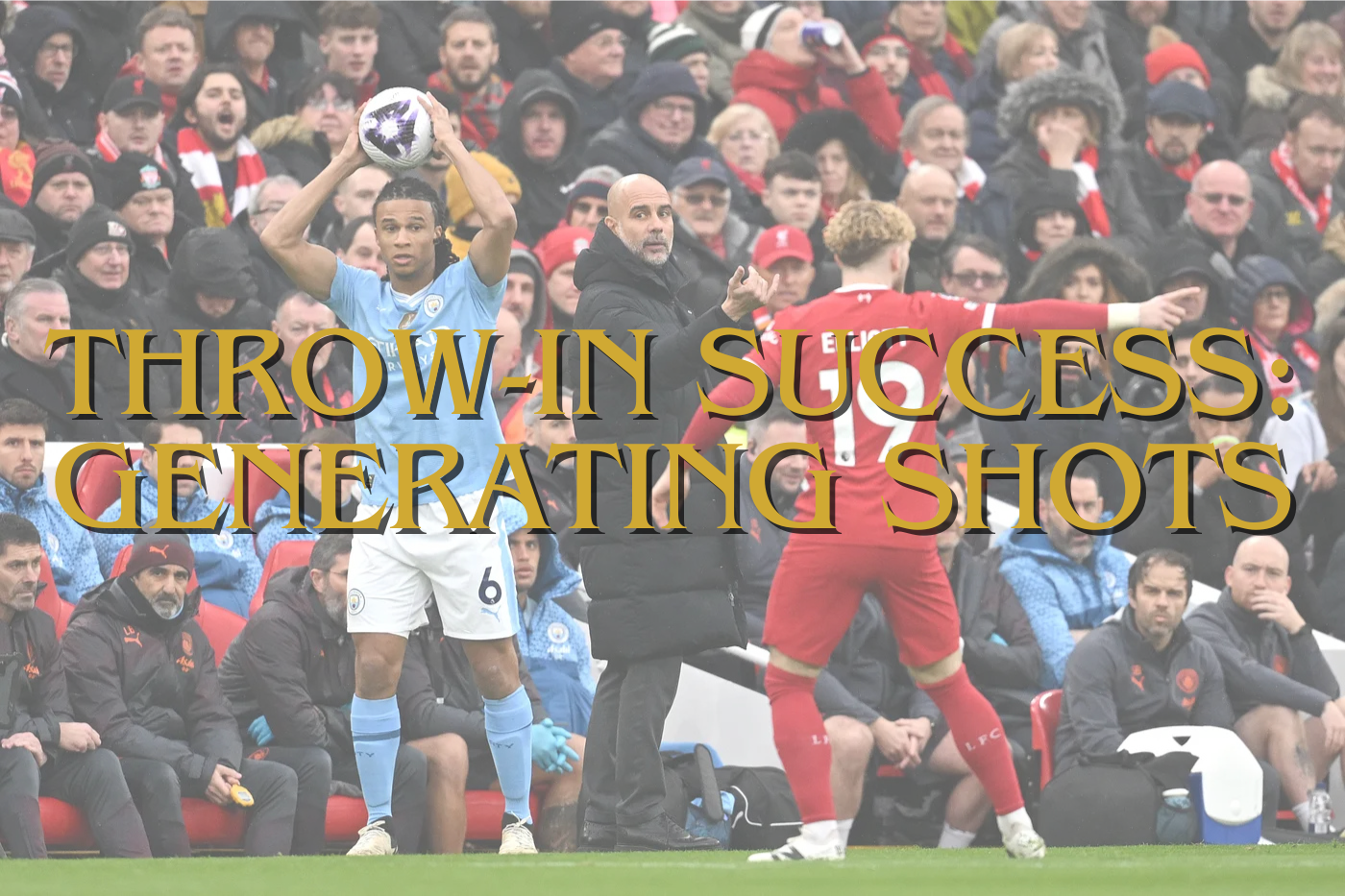Set piece analysis is growing within club football and I very much welcome this development. When looking at set pieces you can actually divide them into 4 separate categories: corners, free kicks, throw-ins and penalty kicks. I think all categories have their own way of approaching them, but I want to focus today on throw-ins.
Throw-ins are often approached the same way as corners and free kicks are, but that’s not the way of properly analysing in my opinion. You have to work with different metrics and dynamics, and that’s why I’m relatively new to working these things out. What I can do, and will do, is look at how we can use data to see whether teams have benefited from throw-ins.
Data
To make this analysis possible we need data to generate actionable metrics. We need event data from leagues we are looking at. For this I collected event data from the Dutch Eredivisie (NL1) and the Belgian First Division A (BEL1) for the 2024/2025 season. The data was collected on September 1st, 2024.
We will look at the teams specifically and not players, so we don’t need to filter for minutes played or certain positions, which makes this part of the research less intense.
Methodology
The idea is to work with event data and use Python as a programming language to convert all those XY data into metrics we can work with. We will convert passes from throw-ins and also look at how these throw-ins are successful but also lead to shots from that particular throw-in.

In the image above, you can see all throw-ins made in the Eredivisie in the attacking half of the pitch. It doesn’t show a lot, but it shows the successful and unsuccessful throw-ins, which can give us insights into directions and progression.
The next step is to find successful throw-ins that lead to shots so we can measure their effect/impact. This means we will look at the next few actions following a throw-in to determine that a shot comes from a throw-in rather than from another action on the pitch.
Metrics
Of course, I have visualised the throw-ins as passes but essence is that we can calculate the number of throw-ins per team for those two leagues. This gives a clear image of which teams do throw-in the most — or get the opportunity to throw in the most.

We now see a list of all teams in the top tier in Belgium and the Netherlands based on quantity. This will give us insight into how often teams have a throw-in.
The next step will be to make the conversion from throw-ins to throw-ins leading to shots, which will be the basis for analysis.
Analysis
The analysis is focused on having an idea whether a team makes the most of their throw-ins. In other words, what percentage of throw-ins will lead to a shot?

In the scatterplot above you can see a few interesting things. First of all it shows the relation between throw-ins and throw-ins leading to shots and you can see the conversion in percentages. The percentages are all under the 10%, and that’s something we really need to have a look at.
The average number of throw-ins is 93,06 and the average percentage of throw-ins leading to shots is 1,58%. In this case, we are looking for the quality and mostly looking for the clubs with the highest percentage.
So the left upper quartile is most important for that part of the analysis as it shows the clubs with the least number of throw-ins, but also with the highest percentage: their emphasis is based on getting shots from throw-ins. Now the right upper is also important, but the relation is different there with the total number of throw-ins.
I’ve also colour-coded outliers for both metrics, but most important is that they are outliers for the percentage of throw-ins leading to shots. This shows us that these clubs/teams are performing many deviations from the mean and these are the teams to have a closer look at.
I’ve written more about the use of outliers here:
https://marclamberts.medium.com/the-complexity-of-outliers-in-data-scouting-in-football-31e9fdca5171
Final thoughts
I’ve not dabbled a lot with throw-in data, but this is a very good way of making the first step into it. From here on we can find teams that are most prolific from their throw-ins and see from video if they are doing interesting things. Of course there is much to improve and to build on, but for now this gives me a good framework to use data in this part of set piece analysis.

Geef een reactie